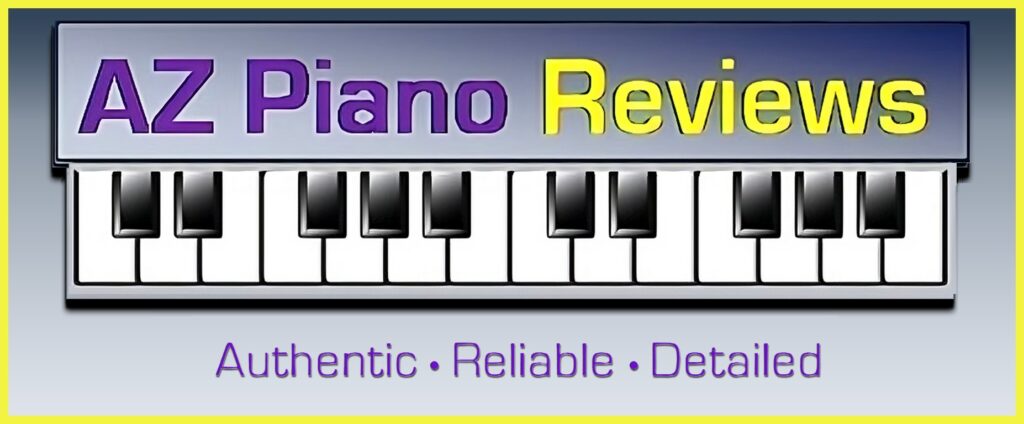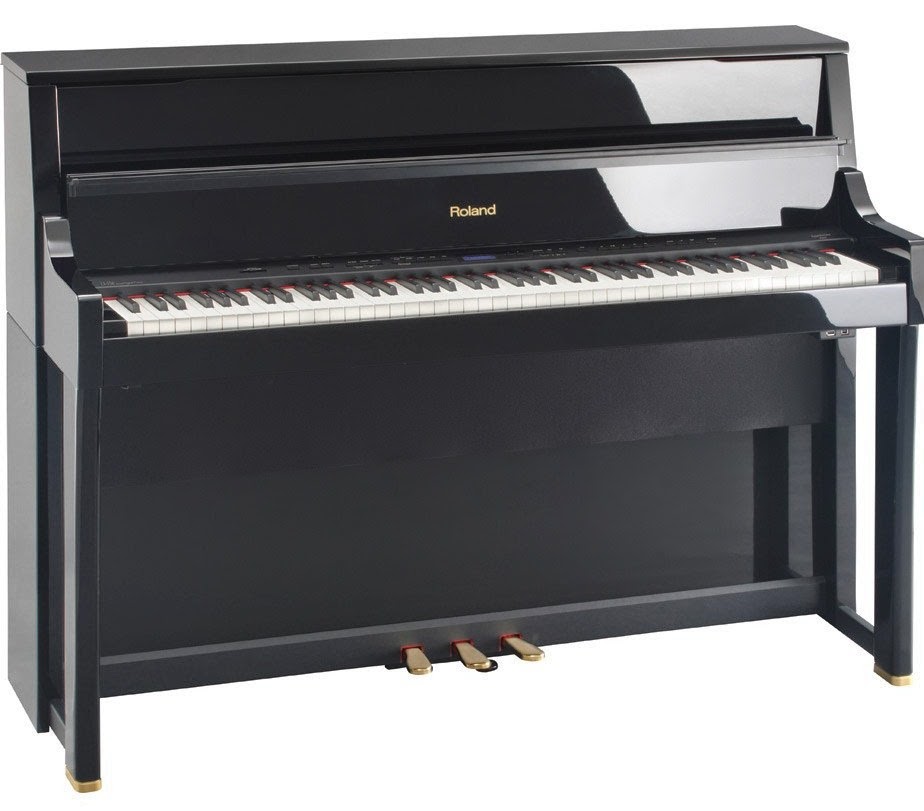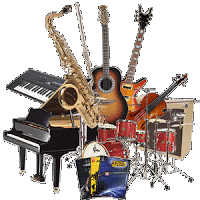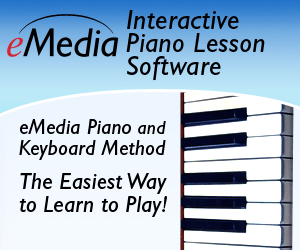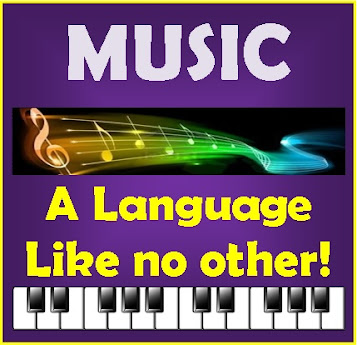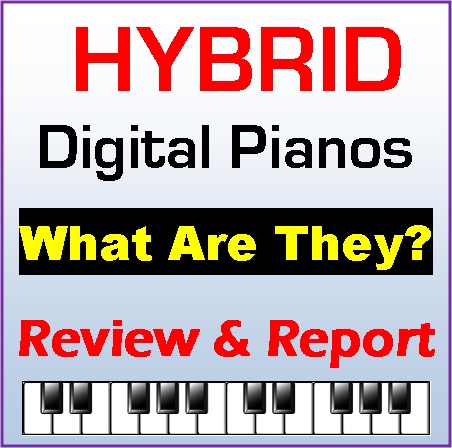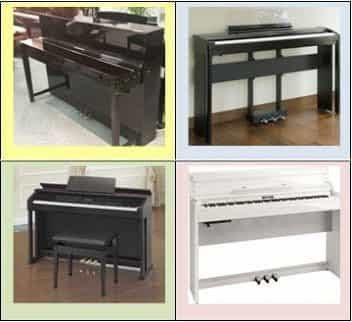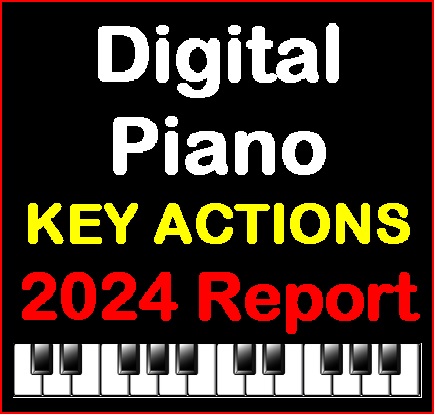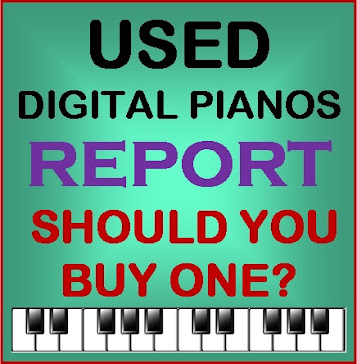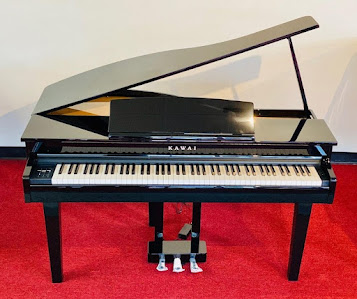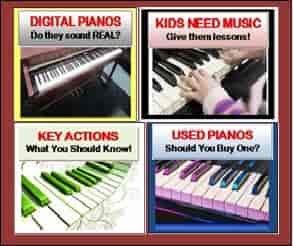 UPDATED REVIEW – August 1, 2017 – Roland LX15e – Recommended – The Roland Corporation of Japan discontinued the LX15e and has replaced it with a new upgraded 2017 model called the LX17 which is very impressive. Please go to the following link to read my review of this new model: Roland LX17 Review.
UPDATED REVIEW – August 1, 2017 – Roland LX15e – Recommended – The Roland Corporation of Japan discontinued the LX15e and has replaced it with a new upgraded 2017 model called the LX17 which is very impressive. Please go to the following link to read my review of this new model: Roland LX17 Review.
Previous LX15e review: Roland is well known around the world for high quality professional music products and has a top of the line LX15e upright digital grand piano in polished ebony and polished white. The LX15e ($7299US retail store price) replaces the previous LX15 and although they look the same on the outside, they are definitely not the same on the inside. Until now Roland has had an impressive array of home digital pianos that were competitive with other brands. But they, like all other major digital piano brands I have played in the past, fell short in the piano’s ability to really play and sound like a high quality acoustic piano. The previous digital piano models got close but ultimately it was not close enough in my opinion to
satisfy a more advanced and demanding piano player, and you would have
needed to pay a lot more
money to get to that level of authenticity in a digital piano. However,
in my opinion the new Roland LX15e has changed all of that with its ability to come much closer to the grand piano playing experience in an upright digital piano using brand new technology. In the US this model is not available on the internet and only available at local Roland authorized piano stores. It would be my best guess that store discounts on this model will be somewhere between 10%-20% off based on my previous experiences with these pianos, but it just depends on the store you go to, product availability, and overall consumer demand. Based on my evaluation of this model, I believe demand will be high and so discounts will likely be minimal. It’s the supply/demand scenario that generates the type of discounts you get: if the demand is big and supply from the Roland factory is low, that situation will raise the price instead of lowering it, so it just depends on how that all goes.
With regard to the all important piano key action which should be the #1 feature any shopper should consider in buying a digital or acoustic piano, the new Roland LX15e Concert Keyboard action (that’s the name they give it) is upgraded and has a noticeably superior piano performance over previous models. The new key
actions are much quieter and move better with a realistic balance from white to black keys and from bass to treble. The piano sound and dynamic
range is much more realistic & pure with smooth incremental changes, and pedaling is improved with long sustain/decay time. For
those people who play digital pianos or have played good acoustic grand
pianos, they would be able to tell how good this new Roland piano
really is as compared to anything that Roland and other piano companies
have had before. The subtleties in tonality, nuance, dynamic range, and
expressiveness are evident when playing complex music in ways not
possible on Roland pianos in the past.
In addition to a physically better built key action in the LX15e, for the first time ever in
any major brand of digital piano that I know
of, Roland now has 3 electronic key sensors per key along with an additional key scanning processor dedicated to processing key velocity information. This new 4-part electronics
system (PHAIV) is in all of the new DP, HP, & LX models and makes a
huge difference in my opinion in overall touch sensitivity, expressiveness, dynamic range, and piano
tone subtitles and is especially noticeable if you are a more advanced
player. If you are a more skilled player I believe you will notice the difference between the expressiveness of the LX15e as compared with previous Roland pianos as well as with other brands.
The Roland Concert Keyboard key action also incorporates a
grand piano simulation
movement with a “let-off/escapement mechanism.” This key movement
simulates the key action feel of a grand piano as opposed to an upright
piano (upright movement such as what you find on current Yamaha
Clavinova digital pianos), and
of the major brands, only Roland & Kawai have this feature in
digital pianos retailing under $8000. When you press the keys down
slowly on a real grand piano, you can feel a slight hesitation or notch
about half way down when the key action is moving and this is called the
escapement or let-off effect. Generally speaking, upright acoustic
pianos do not have this feature but all grand pianos that I have ever played do have this feature. Is this
let-off/escapement function a necessity for playing a piano?…not necessarily because most upright pianos do not have it as I mentioned…but it’s cool to have
because it does offer even better playing
feel, especially for more advanced
players:) The white piano key tops
are coated in a synthetic ivory material which tries to duplicate
the feel
of the older acoustic pianos which had real ivory keys and has a slight
textured feeling to them. This synthetic ivory was on the previous
models too. But on these new models Roland has added new synthetic ebony
for the black keys (left pic) which completes the total realism of playing a real
organic piano keyboard on all keys. This synthetic substance on both
black & white keys
has a slight texture and helps absorb sweat from the fingers and offers a
smoother playing
experience. It also looks a bit classier than the all
shiny white and black keys and I personally like this “feel” very much.
The user control panel (left pic) is upgraded with regard to the buttons and controls over the lower price Roland HP series and is the same as the previous model LX15. The buttons are a bit more solid and meatier as opposed to smaller buttons on other models. The control panel layout is placed above the keys as opposed to the left
side of the keyboard as they are in other brands. I am a big fan of
having the buttons up above the keys
as opposed to being on the left or right side because they are easier to get
to and more intuitive to use. I have played thousands of digital pianos over the years and one of the more irritating things for me is
not being able to quickly and easily change a sound or function on a piano when I want to. There will always be a learning curve in utilizing the various functions on all digital pianos, but in this higher price range having a simpler layout with a minimal but usable amount of buttons is a big help and I believe this model does a good job as compared to other brands in this price range. The Roland fallboard style key cover built into this piano is the type you would find on an acoustic grand piano where it folds down, and I do like that as it gives an even more authentic appearance to this model. When the key cover is opened up fully, the top of it has a music support that acts as a music rest for sheet music and gives you a lot of room to place music on, so that’s a nice feature.
The acoustic piano sound itself on the Roland LX15e taken directly from a 9′ Steinway concert acoustic grand
piano, has 128-note polyphony
piano memory (how many notes can be played and sustained at one time)
which is more than enough for even the most complex piano pieces because
of Roland’s advanced polyphony voice allocation. It’s a fancy way to
say you won’t run out of notes even when layering two sounds together or
playing complex MIDI song files while playing live over the top of it. I have played very complex music on this model and the polyphony was more than enough to handle it including when I layered two sounds together.
Roland calls their Steinway recorded acoustic piano sound SuperNATURAL Piano,
meaning that Roland has attempted to reproduce a much more “natural
& acoustic
stereo sound in their digital pianos and I feel they have done this
quite well. In this model specifically as compared to other brands, the piano sound itself is much more expressive in nature and do get a sense that you are not actually playing a digital piano but instead you’re
playing a real acoustic piano in my opinion, and that’s the ultimate goal for most piano players. The piano sound itself offers an acoustic playing experience
more closely associated with the famous Steinway grand piano sound because as I
mentioned earlier,
Roland takes its piano sounds directly from the $120,000 Steinway concert acoustic grand
pianos. Kawai & Yamaha also have very nice piano tones in
their higher priced digital pianos taken from their grand pianos, so it’s about apples &
oranges…some people like one better than another because everyone has
different ears and reacts to sound differently. I personally enjoy
playing and listening to the Steinway grand sound of the Roland LX15e….especially because of its upgraded internal speaker system that projects the sound through the top lid that lifts up and
really gives you the feeling you’re playing a big grand piano.
The key touch sensitivity settings which helps determine how sensitive the sound response is to your touch, has 100 incremental selections as opposed to 5 settings on other Roland piano models as well as on other brands. There is also additional sound enhancements including what Roland calls Piano Designer
effects. This includes the tones that occur inside a regular
acoustic piano when
the hammers hit the strings and the strings are vibrating, as well as
how the pedals work. Some of those acoustic piano nuances/elements including
what’s known as duplex scale, hammer noise,
damper noise settings, and physically opening and closing the lid of a
grand piano at different height levels, are included in the LX15e. Whether or not these features are
something you will personally hear one way or the other is hard to tell
depending on your ears, expectations, musical experience, playing skill level,
and sensitivity. But I can assure you that these built-in upgrades in the LX15e
as compared to the lower cabinet models Roland HP506 & HP504, do bring another level of piano
playing authenticity to the LX15e.
With regard to the piano pedals, they operate very smoothly and feel
realistic to press down and incorporate the three traditional pedal
functions
(damper/sustain, sostenuto, and soft) of regular acoustic pianos. They
do work better than other digital pianos I have played and also simulate
a
good note sustaining experience using a damper continuous detection pedaling
feature. This function gives the player incremental note sustain
amounts rather than just on & off or half pedal. It is definitely a
much more realistic acoustic piano playing experience than other brands
as well as
physically feeling like the pedal is changing resistance when being
pressed down. Roland calls this feature Progressive Damper Action.
Having quality piano pedals & accurate piano pedal operation is
very important, especially to more advanced players. Roland does not
skimp on this area of piano playing like some other digital piano
manufacturers do. Even the height of the pedals off the ground (an important aspect of pedal playing) is accurate as compared to concert grand pianos like the Steinway acoustic grand pianos. Every aspect of pedal playing can make a big difference in technique and performance and these are not features and functions that should be overlooked.
The LX15e offers many high quality realistic instrument sounds divided into 4
control panel buttons above the keyboard. These sounds include 14
variations of acoustic grand pianos, 5 upright pianos (uprights are
generally not found on other brands), 10 electric pianos, and
321 additional instrument tones accessed through one button called “other” that offers just about anything you can think of
including some impressive strings, organs, banjo, synth, sax, trumpet, sitar, guitars,
individual
drum sounds, etc, for a total of 350 tones, which is a lot. You can see
all of the instrument names and other function descriptions in the LCD
user display screen which is very nice for displaying relevant info, and
the LX15e has a slightly better and larger display screen than most of the other Roland home cabinet pianos for accessing
even more information, which is helpful.
| Roland sound selection iPad app |
As I just mentioned, on the control panel there is an instrument category button called “others” with the entire set of 321 additional
instrument sounds in it. However, getting to the sound you
want in that button can be a bit tedious because you need to scroll up or down with the value +/- button, but this is true of
other brands as well. To help out with this issue, Roland has created a special iPad app
that allows you to select (assuming you have an iPad)
all of the instrument sounds on the piano from
an iPad connected wirelessly to the piano. This iPad Roland app called Piano Partner,
displays all 350 tones from within the piano which are easy to find and
select right from an iPad. Of course you need to dedicate an iPad to
the piano which not everyone can do as it does add extra cost, but it is
very cool to do it that way. On the control panel editing buttons you can
change the “tonality” of the piano sounds by increasing or decreasing the
brilliance or mellowness of the piano & instrument sounds and you
can take any two sounds and layer them together or split them separately
on either side of the keyboard. The LX15e also has the duet twin
piano feature which lets you electronically divide the 88-keys into two
identical 44-key keyboards playing the same notes in the same octaves so
that two people can play the same music at the same time. It’s a great
feature for teacher-student, parent-child, etc, and many of the top
brands are including that feature in their pianos too.
 A digital MIDI recorder is also built in and features 3 tracks of
A digital MIDI recorder is also built in and features 3 tracks of
recording and playback (for up to 3 separate instruments) and being able
to save the songs on a USB flashdrive which is very cool. There is also
an audio wav file recorder which allows actual CD recording and
playback giving a precise rendition of your song which you can then play
along with or save on a USB flashdrive (lower left pic) for loading onto your computer
to use in notation programs or attach to emails to send to family &
friends so they can hear you on their computers…lots of fun with that.
You can also plug in another instrument or microphone into the piano
and record that sound along with the piano and combine them together. There is a key transpose feature on the LX15e to transpose your
recording (including the external audio source) to another key for
singing or modulating the song up or down in semi-tones one step at a
time. This is useful if you want to sing along and get the song in a comfortable singing range for your voice. Even playback speed of MIDI and audio song files can
be adjusted up or down (faster/slower) which is great for audio, and most digital
pianos cannot do this on audio wav/CD files. So that means you can play
along with your favorite CD song direct in your piano and slow it down
to 75% of original speed to learn how to play it at a better (slower)
speed while learning.
The LX15e also plays back General MIDI type song files
from a USB flashdrive which is a great feature and one I use all the
time in my studio. The General MIDI song format allows you to play your
piano parts along “with the band or orchestra” and to interact with
multiple instruments at one time using well known piano lesson books
including thousands of popular songs which can be found on the Internet.
For more info on the General MIDI format go here: General MIDI and Playing Piano.
Roland has a number of other ways its pianos can record music and
playback songs for music education & learning that are quite useful
and can be important when trying to learn music whether you are a
beginner or professional. But this comes as no surprise because for
years Roland has built professional recording & music learning
devices for musicians, teachers, and students who use them in their home
or studio for more effective practice sessions. If you want to know
more about this you are welcome to contact me.
 |
| Air Performer |
Another very cool and useful feature is the ability to connect directly to an iPad for another
interactive way of learning about music and playing the piano, and I use
iPad piano learning/teaching apps in my studio which
provide a cutting edge visual way of interactive piano practice and
learning. A unique feature of the Roland LX piano is that it
can connect wirelessly to an iPad using an optional Roland wireless USB
adapter and specially created Roland iPad apps. In addition to that, Roland has designed a wireless audio
feature to play music from iTunes (with tempo & transpose control) and hear
it through the Roland piano speakers by way of a new Roland Air Performer app without need of connecting audio
cables from the piano to the iPad. This is quite helpful and unique and I
have not seen this featured offered on other brands before. The audio
sound from other non-Roland iPad music apps still need connecting cables
but that’s true of the other brands too. Copyright AZPianoNews.com 2014
As far as the built-in speaker/audio systems in this model, the LX15e has 160 watts of total audio power going into 4
amplifiers and 6 speakers. The LX15 is a taller piano than its competition so that
the 6
speakers can be laid out inside the piano with 2 near the top, two
near the keyboard, and two below. This system gives a more balanced
approach to recreating the acoustic piano playing experience and it
really makes the piano sound big & full. So it’s
not just the power or the internal audio systems themselves, but how and
where these components are installed in the piano and how the
individual piano
tones are projected through those different speakers and amplifiers.
The LX15e lid is able to be opened up in a tilt position to allow the piano sound to come up & out naturally like a grand piano with it’s lid open. This unique feature really does give the sound a chance to resonate through the room in a more organic way and it make s a noticeable difference compared to pianos without this feature. Roland has been in
the professional pro audio business for many years so they have
experience in this area and it shows in the LX15e.
The best way I can sum up and identify the major changes from the previous LX15 model to this new one are as follows:
1. New PHA-4 Concert Keyboard with Escapement and Ebony/Ivory Feel features
Roland’s latest high-resolution touch-detection technology
2. Fortissimo (dynamically very loud) playing styles are fully expressed with the new Dynamic
Harmonic feature, which provides both a unique tonal character and
powerful sound
3. New Individual Note Voicing to customize the sound to your taste by
adjusting the pitch (tuning), volume, and character of each note
independently including Stretched Tuning: -50.0 – +50.0 cent, Note
Volume: -50 – 0, Note Character: -5 – +5
4. Headphones 3D Ambience effect sound experience while using headphones for private practice
5. Display music scores and selected LX15e tones & songs with Piano Partner app for iPad
6. Independent volume control for
headphones & volume limit function
7. Better connectivity with mini stereo input and output jacks as opposed to just standard 1/4 jacks
I do need to point out that while all of the upgrades on these new
pianos are pretty impressive, the most interesting new feature to me is
that for the first time that I know of on a top name home digital
(upright style) piano, you can actually electronically adjust each of
the 88 notes one at a time for tuning, volume, and character (voicing).
On all other top name digital pianos you can only do this for all 88
keys at one time, but not for each note individually. This may not be
useful or ever necessary for beginner thru early intermediate players,
but for more advanced players you may have reason to want specific notes
individually altered because of the way you hear your music and the
notes that are playing. It’s all about the “ear” and about your piano
playing experience & skill level, thus you may find this new and
impressive feature useful to be able to play your music exactly in the
way you want it to sound over 88 individual notes.
Another new feature I found intriguing was the “3D effect” through stereo headphones. It’s
supposed to give you the impression the piano sound is all around you
coming from different directions as opposed to directly into your ears. Roland calls it “an immersive sound
experience” which gives you the feeling you’re not actually wearing headphones at all…and that’s really the point of this feature. I tried it out and found that overall, it had a more natural effect than listening through stereo headphones without this feature. It actually did sound like I wasn’t wearing headphones…although I was:). This is new technology in digital pianos and it’s a nice feature to have especially if you be using headphones often. This headphone sound effect only works when the ambiance button on the piano control panel is selected and it can be turned on or off. Also, it’s important to
have/own excellent sounding stereo headphones for private playing
because you want to capture all the nuances and quality of the new
enhanced Roland piano sound dynamics and tonal qualities. I can give you some good
recommendations if you don’t already have headphones.
 |
| LX15e key cover & top lid closed |
If you are looking for a realistic and satisfying “acoustic piano” style playing experience without an over abundance
of digital features (no drum rhythm
patterns, no automatic chord styles, etc), the new Roland LX15e would be an excellent choice depending on your budget, and I
do highly
recommend it. At almost 45″ tall with the top lid opened up (42″ with the lid closed), a depth from the wall of only 19″ and weighing just 200lbs, the piano is a slim but powerful upright style piano with enough height to make it look real. The LX15e is a big upgrade from the prior model (LX15) in key
action & piano dynamics and a joy to play. Also, as compared against
the other popular name brands such as Yamaha & Kawai, the LX15e has the latest piano technology out there right now, and in a
number of important ways it surpasses what the other brands do in
similar price ranges. Although the LX15e does a lot more things than I
have mentioned in this review,
those features are just “frosting on the cake” as far as I am concerned and I don’t believe they need to be talked about here.
Once you get up into this price range it’s mostly all about piano playing in
my opinion, and that’s definitely where the Roland LX15e excels. As I
always tell people, do your homework before making a buying decision,
but you can’t go wrong on any of the new Roland digital pianos, especially the LX15e.
| Roland HP508 polished ebony |
One last thing…if you like what you read about the Roland LX15e but you want or need to get into a lower price range, take a look a the review I did on the new lower price Roland HP504, HP506, and HP508 digital pianos. They have similar features and piano playing realism compared to the top of the line LX15e, but they are substantially less money. In fact, the HP508 is the identical piano to the LX15e except the HP508 is in a more traditional looking cabinet offered in three different finishes and has slightly less audio power. Go to the following link for my review of those pianos: Roland HP504, HP506, HP508 Review
If you want more info on new digital pianos and LOWER PRICES than internet discounts, please email me at tim@azpianowholesale.com or call direct at 602-571-1864.
*Check out these videos below demonstrating various things about the new Roland pianos
* I recommend eMedia educational software. If you decide to make a purchase after clicking on link below, I have arranged a big discount for you direct with eMedia for their educational software and that discount price is displayed through this link only! I want to see everyone learn to play and enjoy piano!
